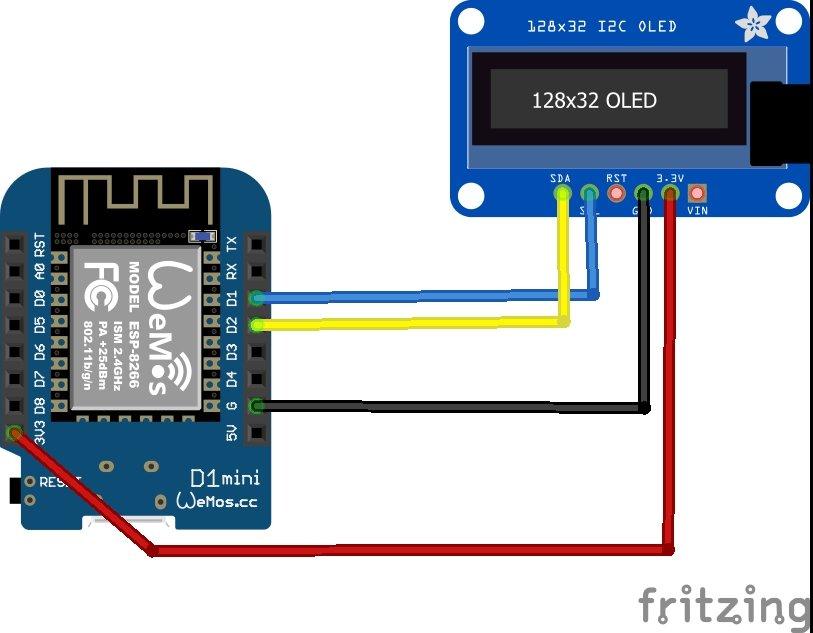
OLED ARDUINO I2C EXAMPLE SOFTWARE
Software Libraries Advantages and DisadvantagesĪll of these libraries are used in place of Wire.

By setting the address to something unique on our bus address conflicts can be avoided. This can be in a form of DIP-switches, jumpers, or solder traces to cut or bridge. Some slave devices, like displays or sensors, have configurable I2C addresses. It’s a basic rule of I2C – every slave device needs to have a unique address. If the slave devices are sensors or require two-way communication with the host then this situation is unworkable. But if you wanted to address each display independently you’re out of luck. This actually might come in handy if you wanted to put two identical displays on your project. The result was what you might have expected – both displays showed the same image.

In a previous article on Using OLED Displays, I hooked up two small OLED displays that had the same I2C address toa single I2C bus. The two I2C slaves have the same address, which is not going to work. Here is an example of an I2C address conflict: The following illustrations should serve the purpose. Just to make sure that we’re all on the same page let’s take a quick look at what the problem actually is.

It’s not an unsolvable problem, it wouldn’t be a very interesting article if it were! There is actually a very simple solution to the problem and it can be implemented in several different ways. Today we are going to look at and resolve one of the problems that we can run into when hooking up multiple devices via I2C – what to do when two devices need to use the same slave address? You can refer back to those articles if you need to bring yourself up to speed on how the bus works, which would be a good thing to know before delving into today’s content. I2C with Arduino and Raspberry Pi – Communicating between a 5-volt bus Arduino and 3.3-volt bus Raspberry Pi.
OLED ARDUINO I2C EXAMPLE HOW TO

Getting started with the I2C Bus – Learning what the bus is, what its origin was and how to use it with the Arduino.I have done many projects that have used I2C devices and have also covered the bus extensively in three sets of articles and videos: We have worked with the I2C bus many times before here in the DroneBot Workshop. The Inter-Integrated Circuit, or I2C, bus has done a lot to simplify the design of systems using microcontrollers, sensors, displays, and microcomputers.


 0 kommentar(er)
0 kommentar(er)
